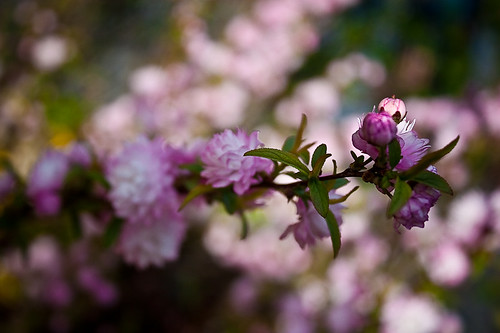
Probably one of the most popular requests of anyone who picks up a camera is that they would like to take a photo of someone or something, and blur the background behind it. Why do we like these kinds of photos? Probably because the blur helps to isolate the subject in the photo and make it stand out, or pop.
Unfortunately, due to lots of technical factors involved in doing this technique, a lot of people find it difficult to do. Here are a few tips that can help you get this effect in your photos. Keep in mind that some of these things may not be possible with your camera, so your mileage may vary:
1. Open up your aperture as wide as it can go
The wider your f-stop, the shallower your depth of field is and the easier it is to blur backgrounds. Photographers call this "shooting wide open". The key is to make your f-stop as small as a number as your camera or lens will allow. I suggest changing your camera to Aperture Priority mode and dialing down the aperture number and giving it a try. If you don't know what Aperture is, see this post.
2. Zoom-Zoom!
Another way to get blurry backgrounds is to zoom out as far as you can with your lens. There is a relationship between aperture and zooming that makes this possible. So if you have your aperture as wide as it can go and you are not getting the blur behind your subject, then make sure you are zoomed out as far as you can go, then step back and refocus.
3. Get Close and Focus Close
This one is simple. If you have a flower, or something nearby, get as close to it as you can and focus on it. As long as there is something not too close behind it, the background should at least fall out of focus.
4. Create Distance between your subject and the background.
If you are shooting a portrait shot near a wall, try to get the person away from the wall. I find that about 8 to 10 feet in front of a wall is a good distance to help me blur the wall behind the subject.
Keep in mind that the above tips can be used in conjunction with one another, so play around with the tips and experiment to see if you can get what you want out of them.
Last tip: About Point-and-Shoot Cameras
If you don't own an SLR camera and you might find that some of the above tips are not working. If this is the case, then you may have run up against some of the limitations of a point-and-shoot camera. The biggest limitation has to do with the internals of the camera: the sensor. Point-and-shoot camera sensors are very tiny in comparison to digital SLR sensors and therefore, due to some physics, do not achieve a shallow Depth of Field as easily as a larger SLR sensor. Sometimes this isn't the case, so again, your mileage may vary. In any case, I have personally been able to achieve nice blurred backgrounds using a point-and-shoot, so it is possible.
To all of you, let me know if any of these tips help you, or if you have any questions or comments feel free to leave some.
No comments:
Post a Comment